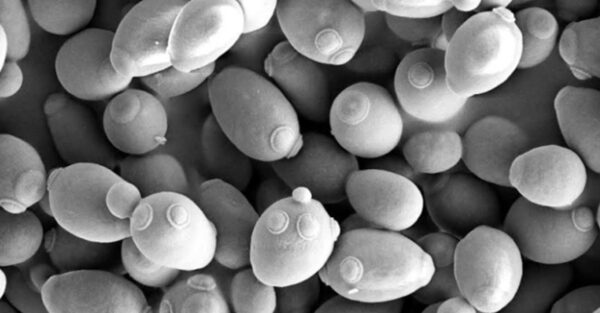Blog | Reading Time 4 minutes
The potential of positive biofilms to complement on-farm biosecurity measures
Increasing emphasis is put on the role and management of microbial biofilms in farm buildings, particularly in the context of reducing on-farm antimicrobial usage while safeguarding the animal microbial environment. A comprehensive review by Virgile Guéneau, with Lallemand Animal Nutrition and the INRAE team, has just been published in the journal BIOFILM1. It provides an overview of the envisioned modes of action of positive biofilms used on livestock building surfaces and the resulting criteria for the selection of the appropriate microorganisms for this specific application. The authors further discuss the pros and cons of such a biosecurity approach as well as its influence along the food chain, from farm to fork. Read the full scientific review here.
Here is an overview:
The importance of biofilms in farms
- In farm buildings, all surfaces — floors, walls, ceilings, and equipment — are colonized by bacterial biofilms.
- Biofilms can be harmless, positive or negative for the animals if they contain pathogens.
- Cleaning and disinfection (C&D) protocols applied between each breeding cycle are common biosecurity methods.
- Studies have shown that C&D are not completely effective on biofilms.
- The decrease in efficiency of C&D is directly associated with the formation of biofilms by surface-associated communities.
- It appears that none of these biosecurity methods are universal and combined strategies hold the most potential.
The potential of positive biofilms
- A very promising approach appears to be guiding the ecology of a surface by settling positive biofilms that will colonize and physically protect the surface from pathogen multiplication (Figure 1).
- Positive biofilms are already used in many sectors, such as food and healthcare.
- Positive biofilm strategy gives very promising results in farm buildings applications to complement C&D protocols.

Figure 1. Representation of the concept of positive biofilms to guide the microbial ecology on the surface of livestock buildings following cleaning and disinfection protocol (© Lallemand; adapted from Guéneau et al., 2022).
Mode of action
Four major complementary mechanisms have been described to explain the effects of positive biofilm on farm surfaces (Figure 2):
1. Anti-adhesive effect: the presence of the positive biofilm itself, or some molecules it produces, can limit the initial adhesion of pathogens on the surface.
2 & 3. Spatial and nutritional competition: by occupying the space and consuming available nutritional resources, the positive biofilm can restrain the proliferation of undesirable bacteria on the surface.
2. Microbial interference: through the secretion of specific effectors such as organic acids and/or antagonistic molecules, positive biofilms can create an unfavorable environment that helps mitigate the presence of undesirable microorganisms on the surface.

Figure 2. Schematic representation of the four possible mechanisms triggering exclusion of undesirable microorganisms by the settlement of positive biofilms (© Lallemand; adapted from Guéneau et al., 2022).
On-farm results
Several studies have already demonstrated the benefits of positive biofilms applied to farm buildings. For example, Rodiles et al. (2021)2 reported how an early microbial intervention on farm building surfaces can influence the microbial communities within a biofilm in a commercial chicken production system.
The team detected a significant increase in the Lactobacillaceae family likely resulting from the contribution of the microbial strains contained in the product (LALFILM PRO) that was applied. Meanwhile, important families such as Enterococcaceae and Enterobacteriaceae were limited during the first week of rearing (Figure 3). Further data about this study have been submitted to peer-reviewed publications.

Figure 3. a) Global relative abundance of Enterococcaceae, Enterobacteriaceae, and Lactobacillaceae from D3 (= 3 days after LALFILM PRO application) to D18. b) Detailed relative abundance of Enterococcaceae, Enterobacteriaceae, and Lactobacillaceae during the first week after LALFILM PRO application at D3 and D6. The animals entered the building at D4.
-
Guéneau, V., Plateau-Gonthier, J., Arnaud, L., Piard, J. C., Castex, M., & Briandet, R. 2022. Positive biofilms to guide surface microbial ecology in livestock buildings. Biofilm, 100075.
-
Rodiles, A., Gueneau, V., Frayssinet, B., Plateau, J., Piard, J-C., Briandet, R., & Castex M., 2021. Assessment of a microbial external inoculation in a broiler chicken production building post disinfection and prior animal entrance on environmental biofilm using 16S rRNA analysis. Poster at the 8th Beneficial Microbes Conference, March 2021, Amsterdam, Netherlands
Published Jun 26, 2022 | Updated May 29, 2023
Related articles
Need specific information?
Talk to an expert


